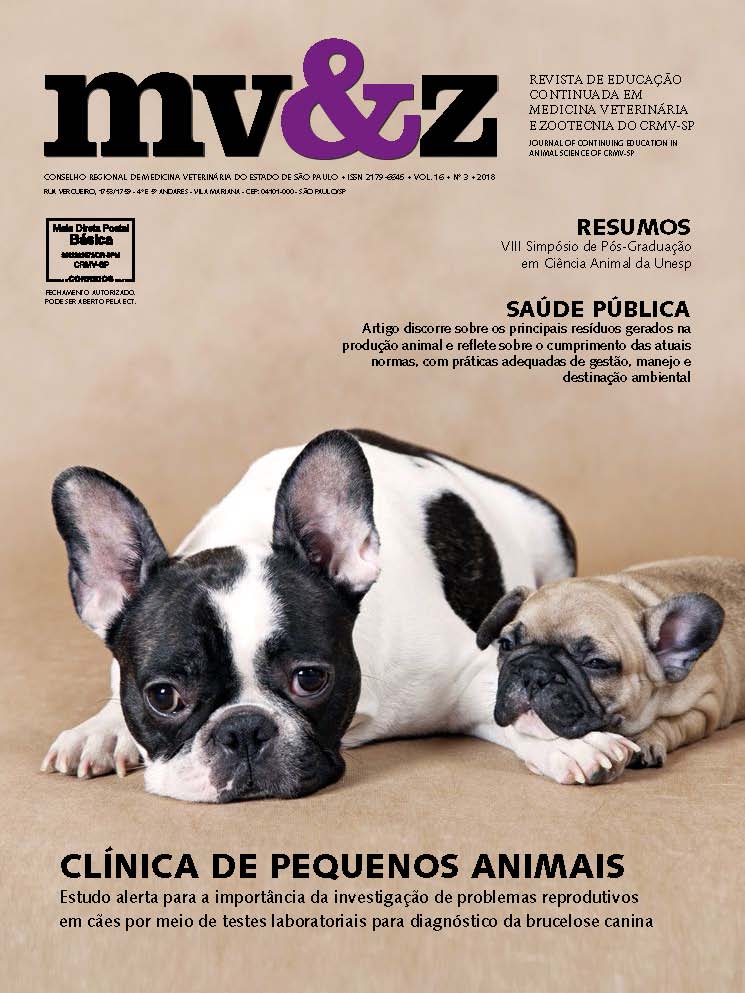Susceptibility profile towards antimicrobial medicine of bacteria isolated from the uterine secretion of female dogs with pyometra in a veterinary hospital located in São Paulo, Brazil, from 2010 to 2015
Main Article Content
Abstract
Knowledge on the susceptibility and resistance patterns of bacterial isolates from canine pyometra is essential from a therapeutic perspective, especially due to its high incidence and potential to develop sepsis. Thus, this study evaluated the frequency of bacterial isolates in female dogs during five years with use of ultrasonograph diagnoses and subsequently by culture and antibiogram of uterine secretion, describing the sensitivity of bacterial isolates towards the most commonly used antimicrobial drugs for veterinary clinical practice. A total of 132 records comprising of 29 races were analyzed. Mongrel dogs were the most prevalent in this study (14.39%), followed by Lhasa Apso (12.12%) and Yorkshire Terrier (9.84 %). Their average age was nine years, and the most frequent etiological agent was Escherichia coli (73.48%), followed by Staphylococcus spp., Streptococcus spp., Proteus spp., Pseudomonas aeruginosa, Serratia spp., Citrobacter spp., non-fermenting gram-negative bacillus and Enterococcus spp. Their sensitivity to antimicrobial medicine partially corroborated the literature, highlighting the microbiological relevance to achieve therapeutic success.
Article Details
1. Autores mantém os direitos autorais e concedem à revista o direito de primeira publicação, com o trabalho licenciado sob a Creative Commons Atribuição-NãoComercial-SemDerivações 4.0 Internacional
2. Autores têm autorização para assumir contratos adicionais separadamente, para distribuição não-exclusica da versão do trabalho publicada nesta revista (ex.: publicar em repositório institucional ou como capítulo de livro), com reconhecimento de autoria e publicação inicial nesta revista.
3. Autores têm permissão e são estimulados a publicar e distribuir seu trabalho online (ex.: em repositórios instituicionais ou na sua página pessoal) a qualquer ponto antes ou durante o processo editorial, já que isso pode gerar alterações produtivas, bem como aumentar o impacto e a citação do trabalho publicado (Veja O Efeito do Acesso Livre);
